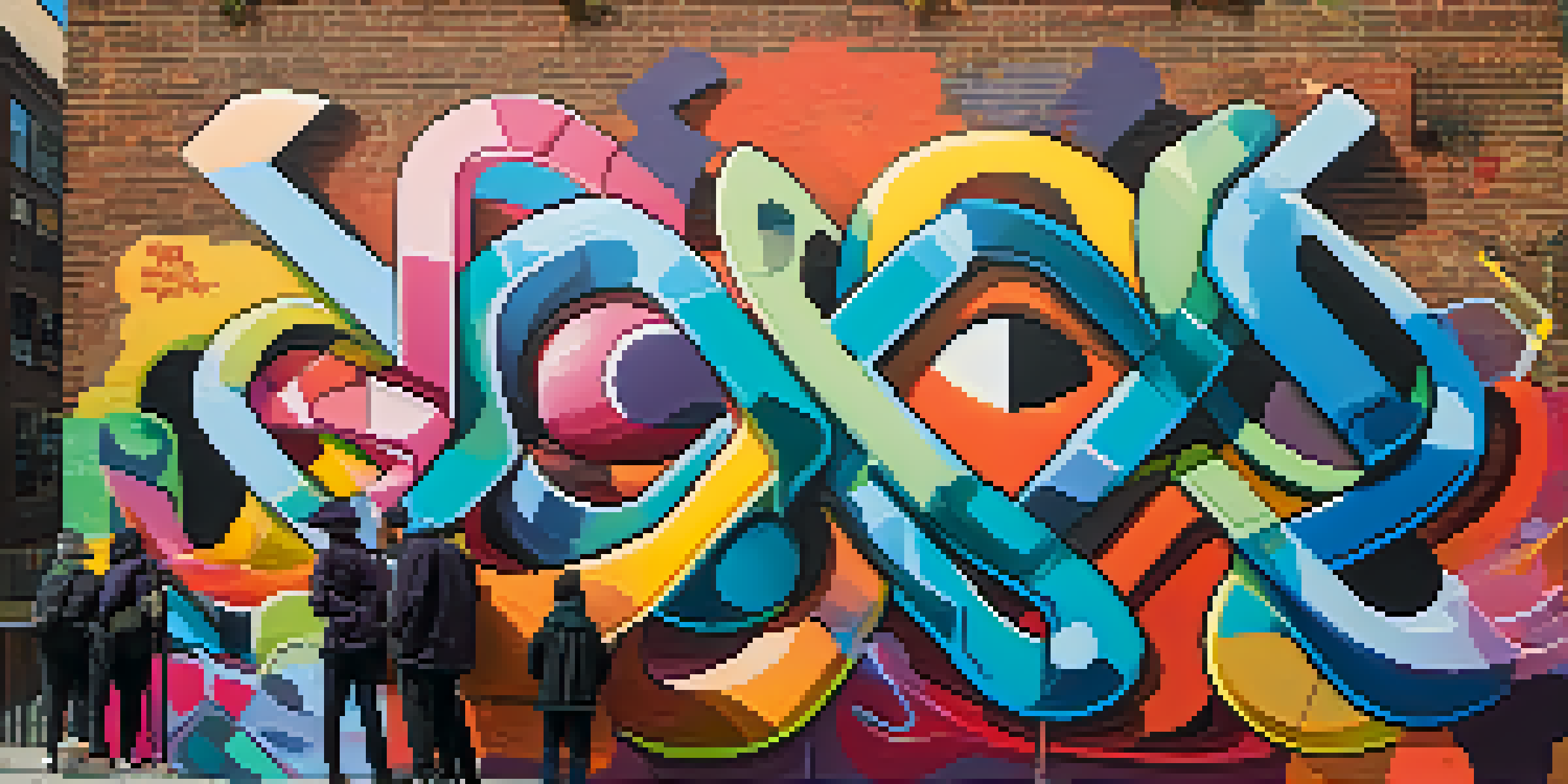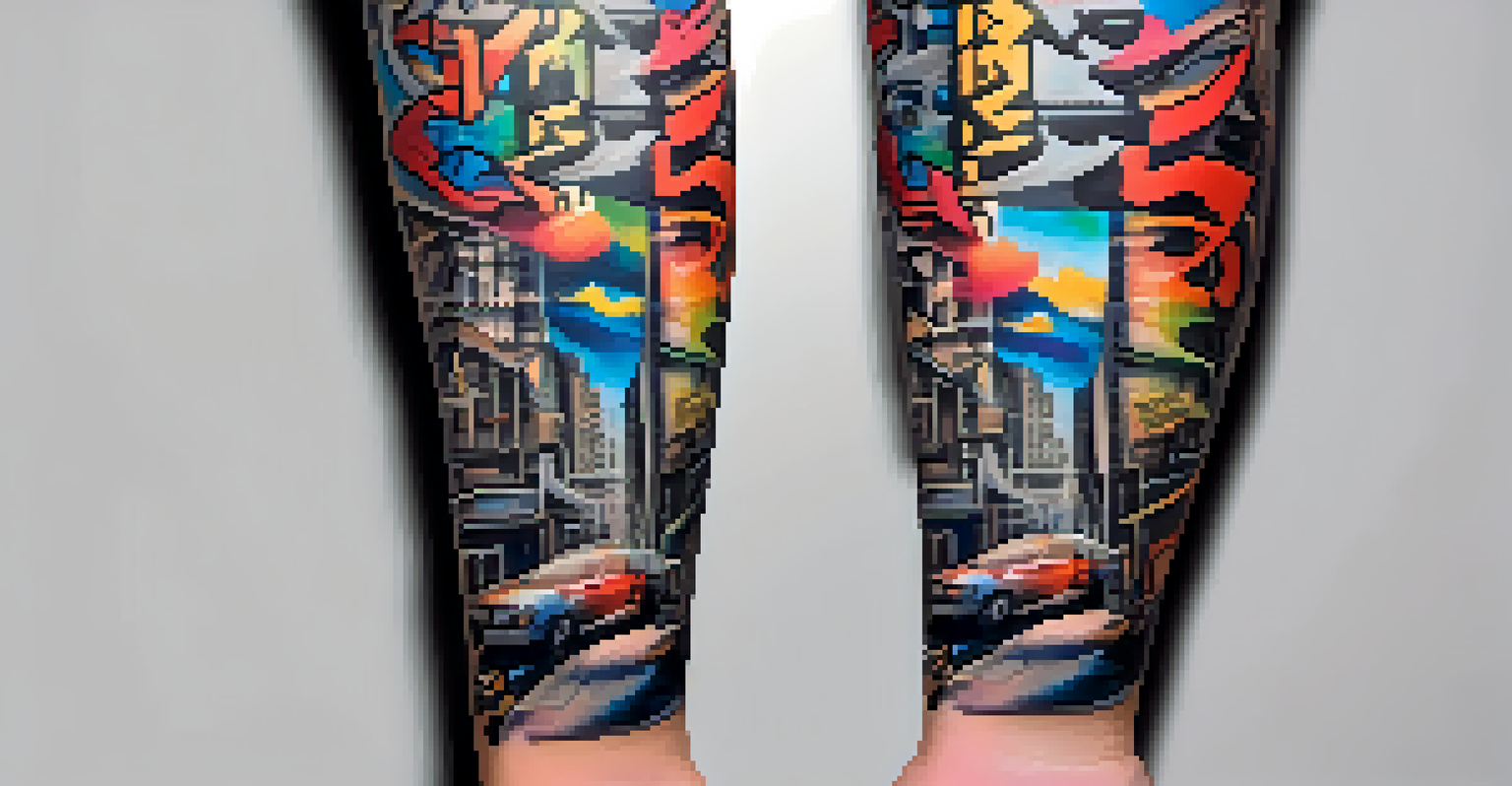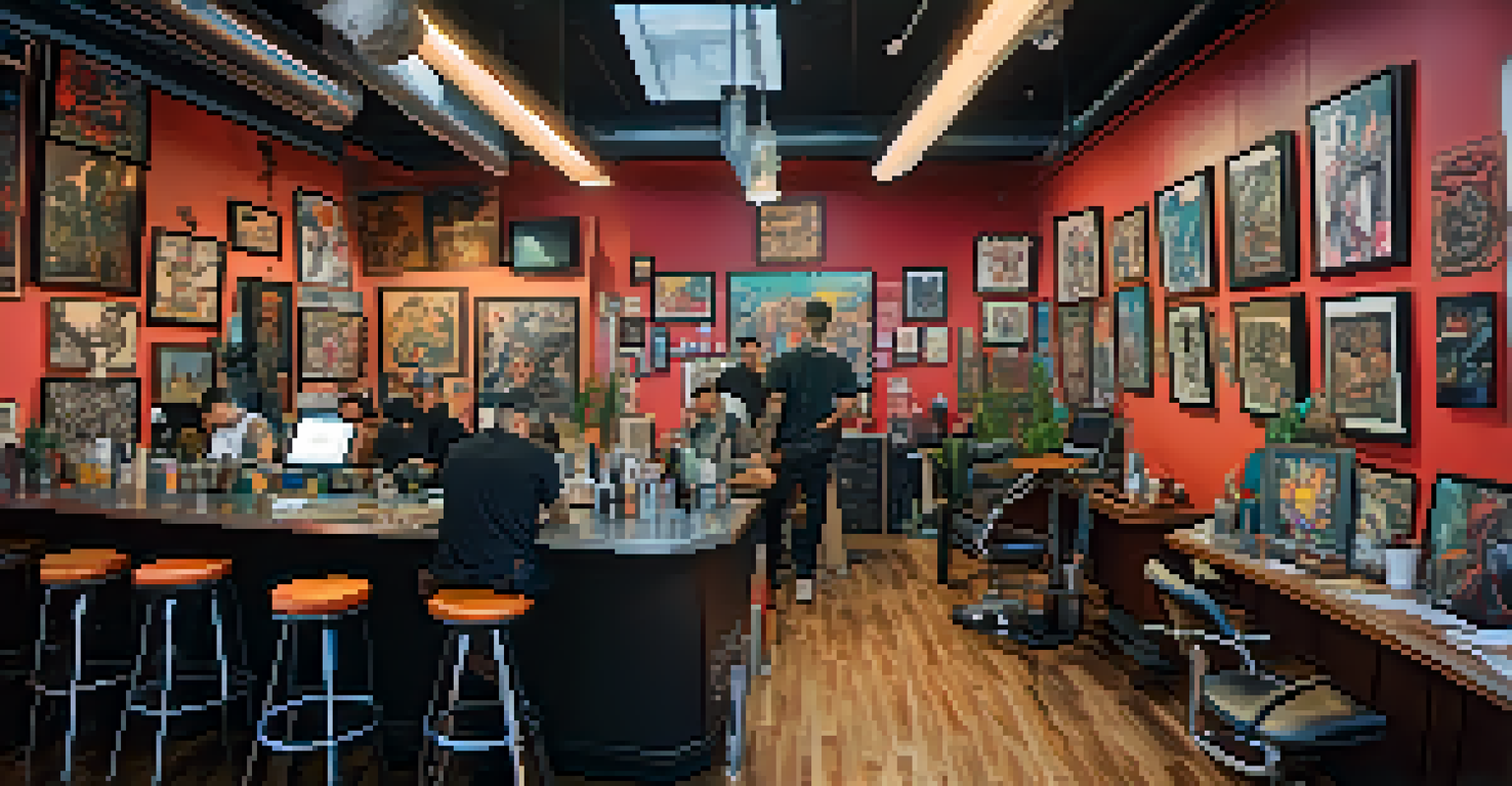The Influence of Street Art on Modern Tattoo Design Trends

The Rise of Street Art in Urban Culture
Street art has blossomed over the last few decades, transforming cityscapes into vibrant canvases. Artists like Banksy and Shepard Fairey have brought attention to social issues, using their work to provoke thought and inspire change. This movement has not only beautified urban environments but has also created a new appreciation for art in everyday life.
Art is not what you see, but what you make others see.
As street art captures the public's imagination, it breaks traditional boundaries, inviting people to see art as accessible rather than exclusive. The raw energy and creativity found in these pieces resonate with many, leading to a growing interest in similar artistic expressions, such as tattoos. This connection between street art and tattoos is where inspiration begins to flow.
Now, street art isn't just confined to walls; it's influencing a whole new generation of tattoo designs. People who admire these urban masterpieces often seek to embody that same spirit and individuality through their ink, making tattoos a personal statement of artistic appreciation.
Key Elements of Street Art in Tattoo Designs
One of the most notable features of street art is its bold use of color and dynamic compositions. Tattoo artists are increasingly incorporating these vivid aesthetics into their designs, creating eye-catching tattoos that stand out. Bright hues and striking contrasts help tell unique stories, much like the narratives found in street murals.

Additionally, street art often embraces abstract shapes and graffiti styles, which lend a sense of fluidity and motion to tattoo designs. This organic approach allows for more creative freedom, enabling artists to experiment with unconventional forms. Such innovation has led to an explosion of unique tattoo styles that reflect the ever-evolving nature of street art.
Street Art Inspires Tattoo Design
The vibrant aesthetics and themes of street art are increasingly influencing modern tattoo designs and styles.
The playful nature of street art also encourages artists to think outside the box. Many modern tattooists are now blending different techniques, such as watercolor, to create tattoos that mimic the free-spirited essence of urban art, resulting in truly original pieces that clients adore.
Cultural Commentary: Tattoos as Art and Activism
Street art often serves as a form of social commentary, addressing issues like inequality, politics, and identity. Similarly, tattoos have evolved from a mere personal choice to a powerful medium for self-expression and activism. This shift is evident in how individuals choose tattoos that reflect their beliefs, values, and experiences.
The role of the artist is to make the revolution irresistible.
Just as street artists use their work to challenge societal norms, tattoo artists are beginning to embrace this activist spirit. Many tattoos now feature messages or symbols that promote awareness and advocate for change. This trend creates a deeper connection between the wearer and their ink, as each tattoo becomes a conversation starter.
This blending of art and activism highlights the role of tattoos in shaping cultural narratives. As more people recognize the significance of their tattoos, they echo the same sentiments found within the street art movement, reinforcing the idea that tattoos can be both personal and political.
The Role of Community in Street Art and Tattoos
Community plays a crucial role in both street art and tattoo cultures. Street artists often collaborate with local organizations to create murals that resonate with their neighborhoods, fostering a sense of pride and belonging. Similarly, tattoo shops often serve as safe spaces where clients can connect with artists and share their stories.
This sense of community encourages individuals to express themselves authentically, leading to a surge in tattoos that reflect personal narratives. Many people are now opting for designs that symbolize their heritage, experiences, or values, further intertwining their stories with the art they wear. This shared understanding strengthens the bond between artists and clients.
Tattoos as Personal and Political Art
Tattoos are evolving into powerful forms of self-expression and activism, reflecting the wearer's beliefs and experiences.
Moreover, social media has amplified this community aspect, allowing artists and enthusiasts to share their work and stories with a global audience. Platforms such as Instagram have become essential for showcasing both street art and tattoo designs, creating a vibrant dialogue that nurtures creativity and inspiration.
Emerging Tattoo Styles Inspired by Street Art
As the influence of street art permeates tattoo culture, new styles are emerging that reflect this artistic synergy. One prominent style is the 'graffiti tattoo,' which mimics the look of spray-painted designs, complete with drips and splashes. This approach captures the essence of street art and allows for a fun, playful aesthetic.
Another trend is the use of large, mural-inspired tattoos that cover significant portions of the body, similar to how street artists transform entire walls. These designs often feature intricate details and vibrant colors, making them a statement piece for any tattoo lover. Such tattoos encourage a sense of adventure and boldness, much like the artists who create street art.
Additionally, the integration of pop culture elements from street art into tattoos has gained popularity. Many tattooists are now incorporating iconic street art characters or motifs, blending urban culture with personal artistry. This fusion not only pays homage to the street art movement but also creates unique designs that resonate with fans of both art forms.
The Future of Tattoo Design in the Context of Street Art
As street art continues to evolve, its influence on tattoo design is likely to grow even stronger. With a focus on individuality and personal expression, the tattoo landscape is shifting to embrace more diverse styles and techniques. Artists are increasingly looking to street art for inspiration, leading to an exciting future full of creative possibilities.
Moreover, as societal attitudes toward tattoos become more accepting, we can expect to see even more experimentation within the industry. The lines between traditional tattoo styles and contemporary street art will continue to blur, allowing artists to push boundaries and redefine what tattoos can be. This evolution can only enrich the art form and create a dynamic environment for both artists and clients.
Community Shapes Art Expressions
Both street art and tattoo cultures thrive on community engagement, fostering connections between artists and individuals.
Ultimately, the relationship between street art and tattoo design is a testament to the power of artistic expression. As both mediums inspire and influence each other, we can look forward to a future where tattoos not only tell individual stories but also celebrate the rich tapestry of urban culture.
Final Thoughts: Celebrating the Intersection of Art Forms
The connection between street art and modern tattoo design trends highlights the importance of creativity and self-expression. Both art forms serve as reflections of our society, capturing emotions and experiences that resonate with people from all walks of life. As street art continues to inspire tattoo artists, we are witnessing a beautiful synergy that enriches the world of body art.
Choosing a tattoo inspired by street art can be a powerful way to celebrate individuality and artistic appreciation. It encourages wearers to embrace their unique stories while connecting with the broader artistic community. This blend of personal meaning and cultural significance makes tattoos even more special.

In conclusion, the influence of street art on modern tattoo design is a testament to the ever-evolving nature of art. By celebrating this intersection, we honor the creativity and passion that drive both movements, fostering a deeper appreciation for the stories behind the ink on our skin.